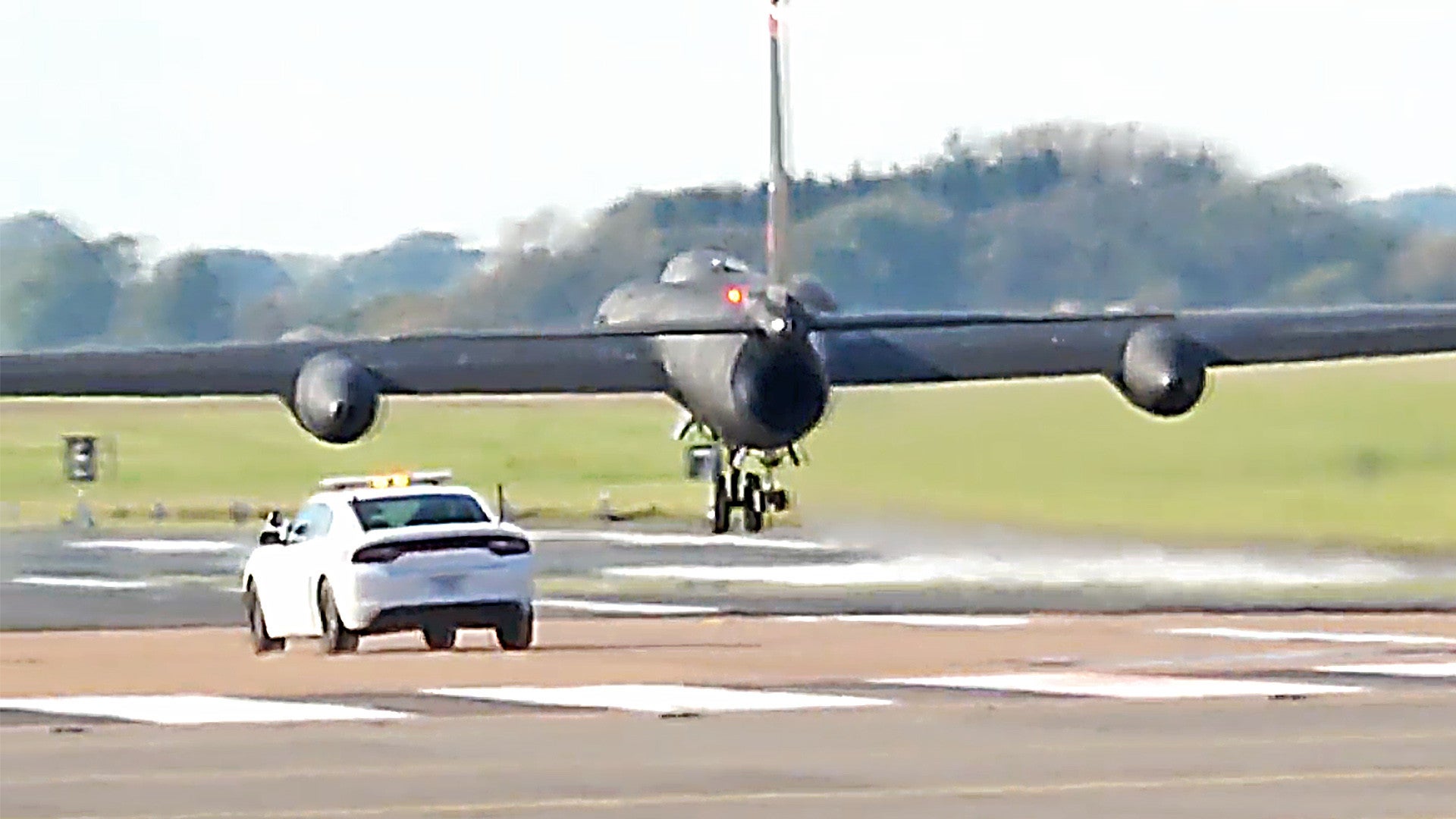A video has appeared online showing a U.S. Air Force U-2S Dragon Lady spy plane landing at RAF Fairford in the United Kingdom without the help of its flaps or speed brakes. The same clip also shows another U-2S touching down normally from the exact same perspective, offering an interesting comparison of the two landing profiles.
Twitter user and plane spotter @Saint1Mil recently captured both U-2Ss landing at RAF Fairford and shared the footage online. The U-2S Dragon Lady spy plane is notoriously difficult to land under the best conditions, in large part due to the copious amount of lift its wings produce to its landing gear configuration, with only a pair of wheels in the center fuselage and smaller pair of wheels under the tail. The U.S. Air Force notably utilizes pilots driving chase cars on the ground to help get the aircraft down on the ground safely after each mission.

The first U-2S lands as normal with its flaps and speed-brakes deployed. It touches down relatively quickly with the chase car racing behind it. On an unrelated note, the chase car seen in the following video appears to be one of two white Dodge Chargers that the Air Force airlifted to the United Kingdom to support Dragon Lady operations last year at the cost of hundreds of thousands of dollars, something you can read about in this past War Zone story.
The second Dragon Lady comes in with its flaps still retracted and the speed brakes closed. As one of the commenters on @Saint1Mil’s Tweet noted, this landing had to be at a higher speed and much flatter to make up for the lack of ability to slow down without a dangerous loss of lift and stability. You can hear what appears to be the pilot actually increasing the throttle for a moment as the plane flies over the camera.
The more typical pitching up, or flaring, right before landing that is visible in the first U-2S landing, would have made it difficult, if not impossible to land under these conditions. As it is, you can see the second Dragon Lady have an exceptionally hard time actually sticking the landing and staying on the ground. The full landing run is notably longer overall.
All of this is very understandable given the aircraft’s overall design. Even the wings on the original U-2s, which were shorter than those on the present U-2S models, were exceptionally efficient and the type’s first flight, on Aug. 1, 1955, at Area 51, was accidental. The plane was only supposed to conduct a high-speed taxi test, but it left the ground after Lockheed test pilot Tony LeVier tried out the ailerons with the aircraft traveling at around 70 knots.

“I had no intentions whatsoever of flying. I immediately started back toward the ground, but had difficulty determining my height because the lakebed had no markings to judge distance or height,” LeVier subsequently said, according to a now-declassified CIA history of the U-2 program. “I made contact with the ground in a left bank of approximately 10 degrees.”
“The U-2 bounced back into the air, but LeVier was able to bring it back down for a second landing,” the previously secret history added. “He then applied the brakes with little effect, and the aircraft rolled for a long distance before coming to a stop.”
All told, with the U-2 already so finicky to land, to begin with, it’s not hard to see why the Air Force continues to train pilots on how to get the plane back down on the ground safely if an emergency keeps them from being able to extend the Dragon Lady’s flaps.
Contact the author: joe@thedrive.com
